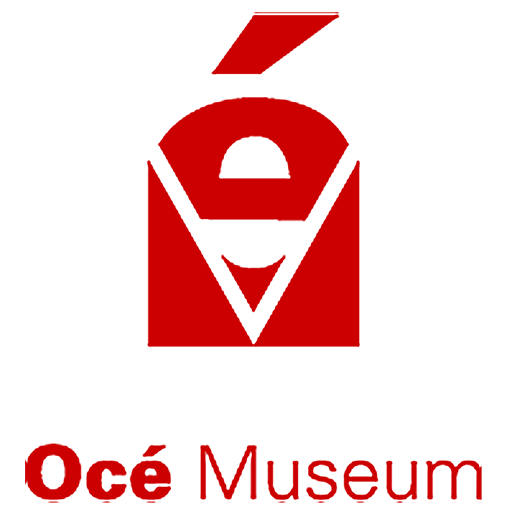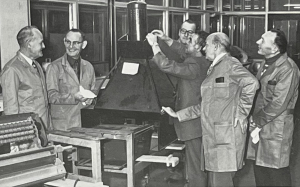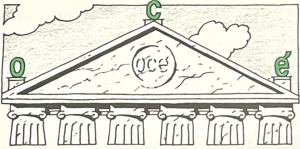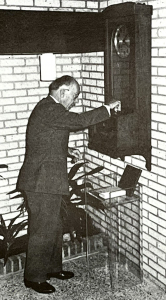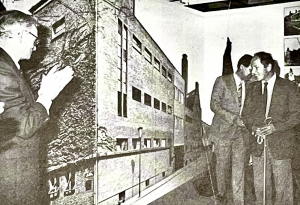Not only did “hardware” come in, but also (retired) technicians also presented themselves who wanted to help with refurbishing and maintaining the old machines. This group was soon given the name “Gouden Ploeg” (Golden Team).
In 1982, the collection had been turned into a “real” museum that could be opened to the public.
Océ Museum festively opened by Karel van der Grinten, May 13, 1982
The opening speech on the occasion of the official opening was delivered by the then Director of General Management, Mr Daan van der Grinten. In his speech, Mr Van der Grinten reflected on the importance of protecting the heritage, an initiative that already began several years earlier in view of the company’s centenary celebrations approaching at that time.
He did have doubts, though, about the name ‘museum’. “The word museum,” said Daan van der Grinten, “originally means Temple of the Muses. It is doubtful whether that is a correct indication of what we are going to open here today. We are still looking for a more appropriate name.”
The museum’s logo at the time was completely in line with Daan’s interpretation.
The official opening ceremony was performed by Dr. Karel van der Grinten, one of the “founding fathers” of Océ and father of Daan. “May I invite Mr Karel van der Grinten to start his work now?”
“The ‘work’ of former chairman of the board Dr. Karel van der Grinten’s day consisted of clocking in a special entrance ticket in the old stamp clock of the Hogeweg. With this he officially opened the Océ Museum.
The Océ Museum moves, June 8, 1984
After its opening in 1982, many interested parties visited the museum. It soon became apparent that the room in which it was housed was not ideal. It was too small, it could get very hot on sunny days and there was no heating. Everyone was happy when the museum was offered another, larger space in the former Van Liebergen building on Urbanusweg. The Golden Team went to work to make the new space suitable.
This building is still the museum location, although it has been redecorated and renovated many times.
On June 8, 1984 the time had come: the Océ Museum was reopened. The chairman of the Antiquities Committee, Lei Giesen, recalled the technical development of the company since its founding, which had progressed to electrostatic copying on plain paper in some 65 years.
The official (re)opening of the museum was performed by Mr Daan van der Grinten, by unveiling a huge photo of the now torn down Océ buildings on the Hogeweg.
